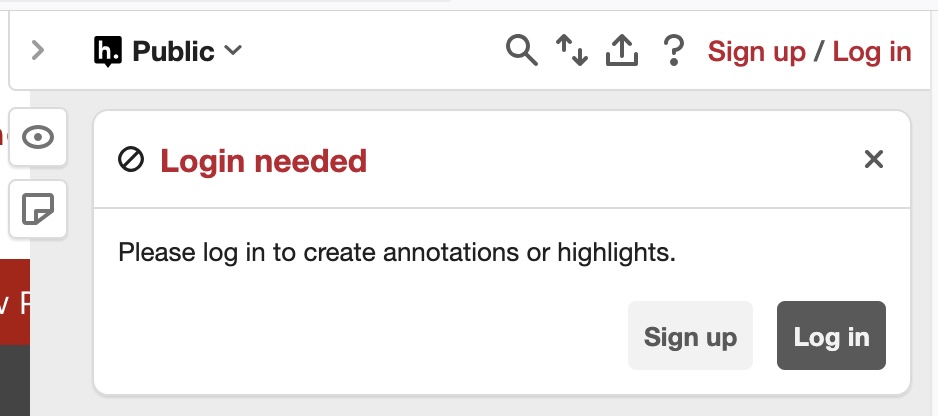Annotate with Hypothesis
Pressbooks allows you to create public or private annotations of your book using Hypothesis, an open source web annotation tool. Hypothesis can be used to enable private (or public) communication between editors and proofreaders, personal note taking and annotation, social learning and discussion about a text, or to foster deeper engagement between writers, readers, and your text.
Your book’s administrator has already enabled Hypothesis, so you can see the Hypothesis annotation client in the top right corner of your book’s reading interface. The public layer can be viewed by all visitors to your book, and written to by anyone who has created a free Hypothesis account.

Create a Hypothesis Account and Log In
- Open up the Hypothesis panel on the chapter in your book’s reading interface that you want to annotate.

- Click Sign up.
A new tab will open with the Hypothesis sign up form. - Type your information and click Sign up.
Hypothesis will send you an account activation email. - Activate your account by clicking on the link in the email from Hypothesis.
- Type your log in credentials and click Log in.
- Close the Hypothesis window.
✔️ You are now logged in and can start annotating.
Watch and Learn: Using Social Annotation in Pressbooks
This simple how-to video walks through the process of enabling the free version of social annotation software Hypothes.is in Pressbooks and using it to add comments and annotations associated with Pressbooks content.
